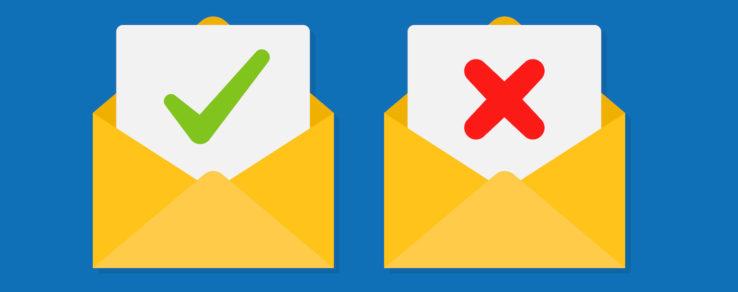When sending out marketing emails to energy utility customers, errors can happen. Maybe a product name is misspelled or a call-to-action has the wrong link. Depending on the situation, you might need to send a correction to alert customers to the mistake. But how do you know if you need to send one? Read on to learn best practices for sending error correction emails.
A plan of action for error correction emails
No matter how many people are reviewing your marketing campaigns, errors can slip through the cracks. In fact, a recent study finds more than half of marketers made between two to five mistakes in their email promotions last year. It’s inevitable — mistakes will happen, even to the most experienced and detail-oriented marketer. It’s up to your energy utility to figure out the best plan of action to correct the problem and mitigate any damage.
Step 1: Decide if you need to send a correction
The first step is figuring out if the error is big enough to warrant sending a correction email. Some mistakes are more serious than others, so you’ll need to figure out what type of mistake necessitates an “oops” email.
Common mistakes in marketing emails:
- A link is wrong or not working
- Spelling or grammar errors
- Recipient is addressed incorrectly
- Secure information was leaked
- Email was sent to the wrong recipient
For example, a missing or incorrect link prevents customers from enrolling for a particular program or service — potentially reducing revenue or conversions for your energy utility. In comparison, a minor grammar error does not have these ramifications and is likely to go unnoticed by a majority of customers. In fact, sending a correction email for a minor spelling mistake may only serve to highlight the error for customers who missed it the first time.
Keep in mind, you don’t want to make a habit out of sending correction emails. Customer satisfaction can be negatively impacted if customers keep receiving these type of emails. Sending a correction means sending two emails instead of one. This can be risky considering customers’ inboxes are already filled to the brim with promotions. That’s why your energy utility needs to be selective on what mistakes require a correction.
Step 2: Determine how to address the error
Now that you’ve decided a correction email is the best course of action, your next step is to address the error. It’s important to be prompt and send a correction email quickly. In some cases, your customers might only read the corrected version and skip over the original version. The longer you wait, the greater the chance for negative feedback from customers.
While nobody likes acknowledging an error, it’s important to be clear, straightforward and own up to the mistake. In other words, don’t sugarcoat it. A humble and honest response goes a long way in keeping customers satisfied with your energy utility.
Follow these four steps for writing effective error correction emails:
- Explain the error in clear and concise language.
- Let customers know what has been fixed and any action they need to take.
- Provide a sincere apology.
- Offer reassurance the issue will not happen again.
Step 3: Choose the right email subject line
Perhaps the most important part of the error correction email is the subject line. The right subject line increases your chances that customers will read the corrected version, not the original email. Your subject line should be short and sweet, while clearly explaining why your energy utility is sending another email.
When sending the same email with corrected information, consider adding “Correction” or “We Apologize” before the original subject line. Humor can also help to strengthen customer engagement. For example, using the word “Oops!” before the original subject line shows that your energy utility acknowledges the mistake with a touch of humor.
Subject line ideas for your error correction emails:
- CORRECTION: [original subject line]
We apologize – link fixed! - Sorry, we fixed the link
- Correction: What we meant to say
- Oops! We made a mistake
- We apologize for the error
- Sorry about that! Here’s the correct information
Lessons learned from common marketing mistakes
After sending a correction message, be sure to track email performance to see the impact, including open rate, CTOR, delivery rate and opt-out rate (this one is important to watch). Sending a correction email is a learning experience, allowing you to take steps in the future to prevent a similar situation.

